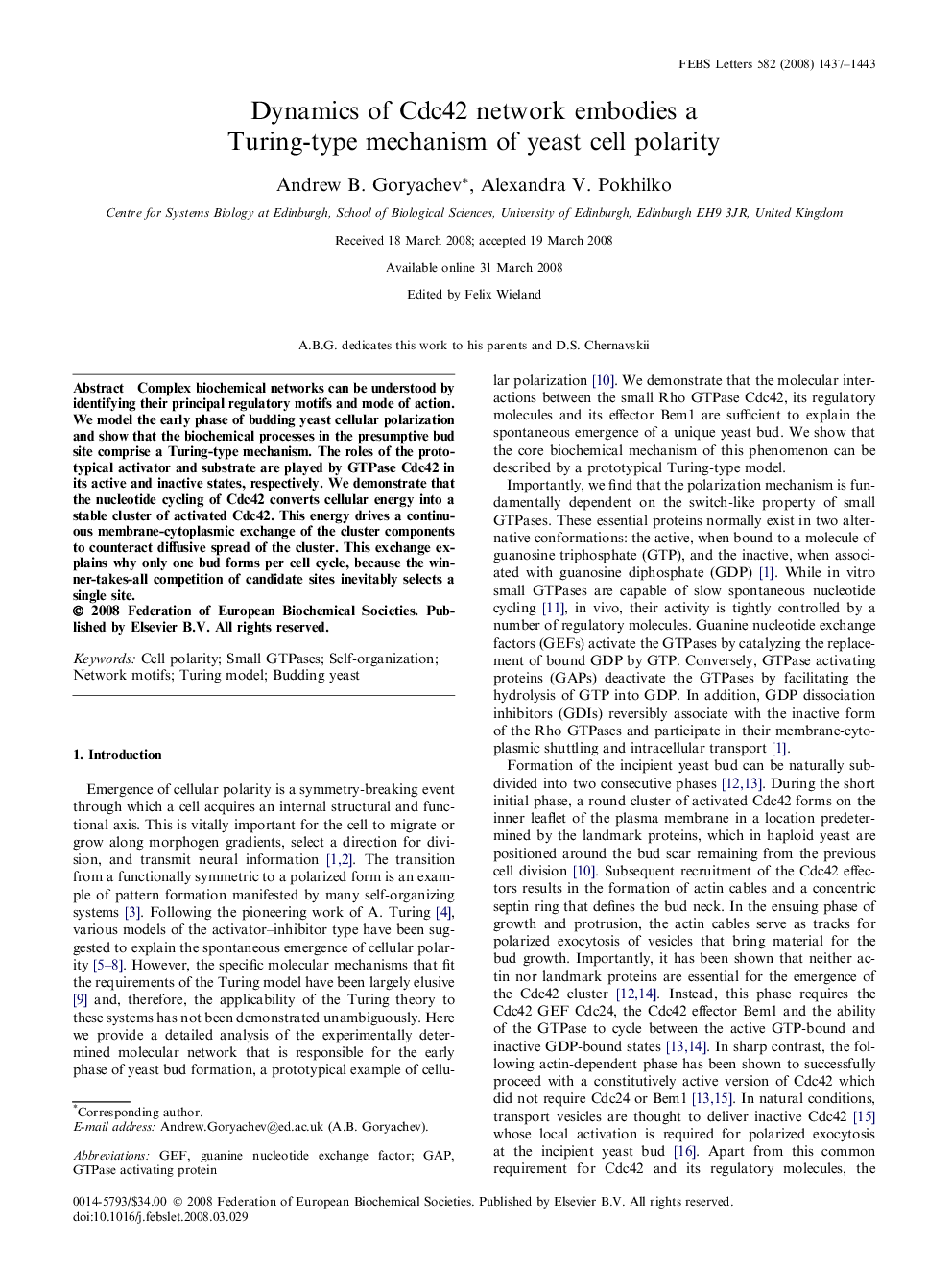| Article ID | Journal | Published Year | Pages | File Type |
|---|---|---|---|---|
| 2049112 | FEBS Letters | 2008 | 7 Pages |
Complex biochemical networks can be understood by identifying their principal regulatory motifs and mode of action. We model the early phase of budding yeast cellular polarization and show that the biochemical processes in the presumptive bud site comprise a Turing-type mechanism. The roles of the prototypical activator and substrate are played by GTPase Cdc42 in its active and inactive states, respectively. We demonstrate that the nucleotide cycling of Cdc42 converts cellular energy into a stable cluster of activated Cdc42. This energy drives a continuous membrane-cytoplasmic exchange of the cluster components to counteract diffusive spread of the cluster. This exchange explains why only one bud forms per cell cycle, because the winner-takes-all competition of candidate sites inevitably selects a single site.
